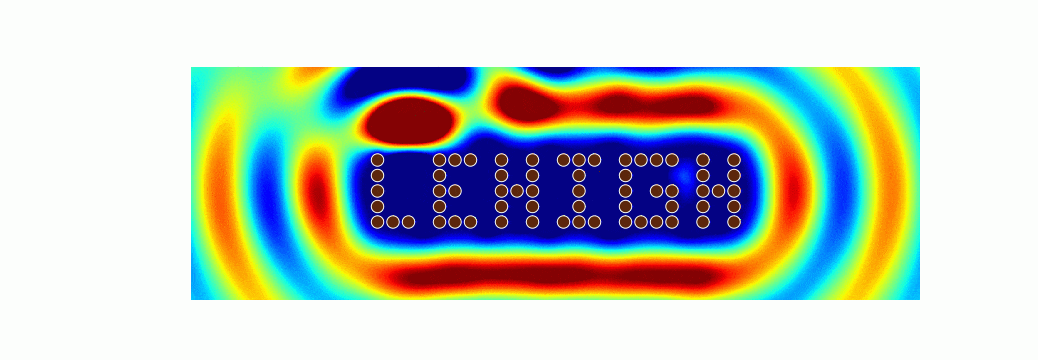Justin Jaworski and Keith Moored are Co-PIs and both Assistant Professors of Mechanical Engineering and Mechanics at Lehigh University. They were assisted by graduate student Nathan Wagenhoffer. Below they discusses their research on how noise is created.
Aerodynamic noise generation is important to many engineering applications, such as wind turbines and aircraft, where noise annoyance to the public is critical. Excessive noise explains in part why most airports are located well outside of city limits and major highways are flanked by traffic noise barriers; people don’t like noise. The generation of noise is found by analyzing how the air or fluid around objects is disturbed. For our purposes, we identify noise generation in two broad senses: scattered noise and radiated noise. Scattered noise results from a sound wave encounters a solid body and is amplified and bounces off. Radiated noise is made by vibratory motion of the body. If we can find a way to model acoustic disturbances in air, for example, then we can find how these motions can generate noise. In a concerted effort to identify the noise from arbitrary solid bodies, we have developed a two-dimensional (2D) acoustic field solver. The 2D model allows us to simplify problems to their essentials, while still ascertaining where and how the noise is generated for a specific body. We simply need to define how does the pressure around a body behaves and then a resulting acoustic field can be found.
But finding the pressure field around an airfoil, for instance, is not a straightforward task. To accurately find the pressure on a moving airfoil, one actually has to solve the equations of fluid flow for the body. We choose to describe our fluids problem with the similar mathematical treatment as the acoustics section. This allows for us to use the same to perform the analysis on the exact same geometry and exploit any speed up algorithms on both problems. The fluid solver finds how the airfoil makes vorticity, or local spinning of a region of fluid, due to its movement. Vorticity is responsible for most sound generated created at low speeds, so a coupling of this flow solver with the acoustic solver is natural. The motion of a vortex, a coherent region of vorticity, produces a greater pressure than its surrounding area.
The boundary element is used for both the acoustic and fluid flow solvers. This method allows us to define our problem by only looking at the surface of a body. Unlike many other methods, we do not have to find values for the interior region of a body. While we have to solve a problem over less of a total space than other methods, this comes at the expense of the problems become much more computationally expensive because of the spatial reduction. That is to say, instead of simply solving a problem at a given point in space, we need to find how does each point on the boundary interact with all other points on the boundary. This type of problem is traditionally called an N-body problem. To aid in the computation of the problems, we employ the fast multipole method (FMM). The FMM has been called one of the top 20 algorithms of the 20th century.
The FMM greatly reduces the amount of computations needed, by treating groups of evaluations point at great distance as single values. In the N-body problem of gravity between planets in different two different galaxies, this would be akin to treating one galaxy as a single mass to find its gravitational pull on a single planet in the other galaxy. For the flow and acoustic solvers we employ the same method, but we substitute in the appropriate equations instead of the law of gravitation.
With a system in place that can find how a machine would generate noise, we have turned our attention to “how do biological systems make noise?” We know that the feathers of an owl provide a damping mechanism that allows them to fly silently, making them terrific hunters. What if other animals produced sound that was equally beneficial to other behaviors? Are there schools of fish that can minimize the noise they make by swimming in a certain pattern at given speeds? Do hunter water hunters have skin that ensures noise is only produced behind them, allowing them to approach prey with ease? Our computational framework will allow us to answer these questions, while quantifying the mechanisms of noise generation.
Header image: Wave generation and scatter from multiple pulsating cylinders. Image credit to Nathan Wagenhoffer.
